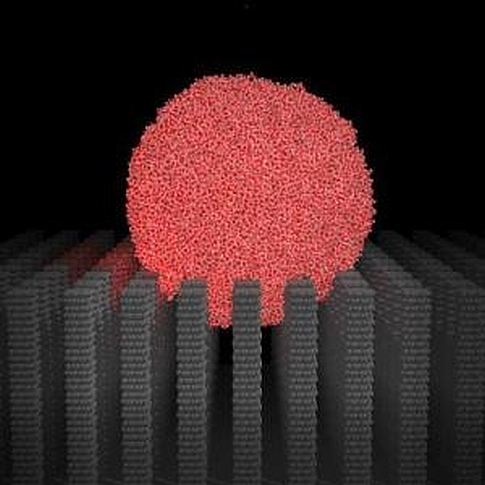Robots Borrow Hydro-Repelling Tech from Insect Legs to Walk on Water
Coming soon: surfaces that never need cleaning, and the messiahbot

A robot that can walk on water: such a miracle is one step closer to reality, thanks to some new research that learns from the work nature has done with water striders. Walking on water may seem like a superpower and the name scientists have give the property of the striders’ legs is fitting: super-hydrophobia.
Super-hydrophobic legs repel water, and it is exactly this super property that scientists have tried to simulate with a (you guessed it) supercomputer. Professor of Chemistry at University of Nebraska-Lincoln Xiao Cheng Zeng worked together with colleagues — and the supercomputer — at Japan’s RIKEN Institute, Takahiro Koishi, Shigenori Fujikawa, and Toshikazu Ebisuzaki and Kenji Yasuoka of Keio University.
Water striders and other super-hydrophobic organisms use a two-level structure: a waxy surface makes it hydrophobic and a covering of microscopic hair-like follicles pushes it to the super-hydrophobic level. These follicles may be covered by even smaller hairs, and the whole shebang repels any water droplets that try to stick to it.
Scientists have been studying the phenomenon since the 1930s, but this research takes it to a new level. Instead of turning the hose on some actual hairy and waxy surfaces, the scientists designed a computer simulation to “rain” virtual water droplets of different sizes and at different speeds on surfaces embedded with pillars of various heights and widths, and with different amounts of space between the pillars.
They were looking for the exact configuration of pillars that would keep all water droplets from falling between them and thus completely away from the waxy surface — the difference between merely hydrophobic and super hydrophobic. After tens of thousands of experiments, they found that there is a critical pillar height and placement.
This same technology is found on flower petals that can make water bead up and roll off of flowers; the idea is that the research will enable the creation self-cleaning walls, counters and fabrics. We’ll never clean again, or do laundry, and our robots will be literally walking on water. Now if only they would design one that can turn water into wine…